French Cuisine

Why is French cuisine, including desserts, considered among the finest in the world ?
French cuisine, including desserts, is renowned worldwide for its exquisite flavors, meticulous preparation, and artistic presentation. This reputation is due to factors such as historical significance, quality ingredients, artisanal methods, chef training, innovation, and attention to detail. French cuisine has a long history dating back to medieval times when it was influenced by various cultural invasions and trades. Over centuries, French chefs refined their techniques, creating a rich culinary tradition that emphasizes depth of flavor and precision in cooking methods. French cuisine places a high value on using fresh, high-quality ingredients, often sourced locally. The variety of ingredients available in different regions of France allows for a wide array of dishes and flavors. French baking traditions, such as those used in making croissants and baguettes, involve complex processes that yield exceptional results. Many French desserts, like macarons and éclairs, are handcrafted with care, ensuring each piece is of the highest quality. France is home to some of the best culinary schools in the world, where future chefs receive rigorous training. Young chefs often learn from experienced masters through apprenticeships, preserving techniques and recipes. French chefs are known for their innovative approaches to traditional dishes, pushing the boundaries of gastronomy. The integration of international flavors into classic French dishes keeps the cuisine dynamic and exciting. French cuisine emphasizes not just taste but also the visual appeal of the dish, making every meal an experience. The emphasis on all senses—smell, sight, taste, touch, and even sound—creates a comprehensive dining experience.
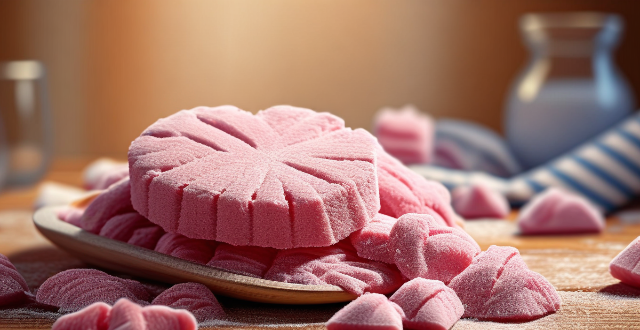
What makes macarons a quintessential French sweet treat ?
Macarons are a quintessential French sweet treat due to their origins, precise recipe requirements, variety, elegance, and cultural significance. They were perfected by the French in the mid-19th century and have become a staple in French patisseries. Despite the simplicity of the ingredients, making macarons requires precision and skill, which is emblematic of French culinary traditions. Macarons come in a wide range of colors and flavors, allowing for creativity and customization. Their small size and elegant appearance make them perfect for an afternoon tea or a light dessert. In France, baking is considered an art form, and the craft of making macarons is no exception. They are often given as gifts during special occasions, reflecting the French tradition of giving thoughtful, beautiful presents. Overall, macarons are not just a sweet treat but a representation of the beauty and refinement associated with French cuisine.

What kind of chocolate is typically used in French chocolate desserts ?
The article discusses the importance of chocolate selection in French chocolate desserts, highlighting the use of dark, milk, white, and unsweetened chocolate. It emphasizes the rich culinary heritage of France that demands quality ingredients, especially in chocolate desserts. The article also suggests considering the desired outcome of the dish, taste testing, and experimentation to find the perfect chocolate for a particular dessert.

Are there any healthy French dessert options ?
The article discusses the various healthy options for French desserts. It mentions fruit-based desserts like Tarte Tatin and Clafoutis, which use fresh fruits as the main ingredient, providing natural sweetness and fiber. It also suggests using whole wheat flour or almond flour to make these desserts healthier. The article further introduces nut-based desserts such as flourless chocolate cake and walnut and almond cake, which are low in carbohydrates and high in healthy fats and protein. Finally, it concludes that there are many healthy French dessert options available that allow you to indulge in something sweet without compromising your health goals.

What are some unique ingredients commonly used in French desserts ?
French desserts are renowned for their exquisite taste and delicate textures, which are largely due to the unique ingredients used in their preparation. These include vanilla beans, almond meal, cream, butter, lemon zest, and kirsch. Each ingredient plays a crucial role in enhancing the flavor, aroma, and texture of French desserts. Understanding the importance and usage of these ingredients can help you appreciate the artistry behind French pastry making and even try your hand at creating your own delectable treats.

Where can I find the best French patisserie in Paris ?
Paris is renowned for its delectable pastries and desserts, and finding the best French patisserie can be a delightful adventure. Some of the top recommendations include Angelina, Ladurée, Pierre Hermé, Du Pain et des Idées, Pâtisserie Ciel, Gerard Mulot, Arnaud Larher, Carl Marletti, Patrick Roger, Hugo & Victor, L'Éclair de Génie, Le Moulin de la Vierge, Gosselin, and Au P'tit Suisse. Each offers their own unique twist on the classic French pastry, from traditional macarons to modern flavor combinations.
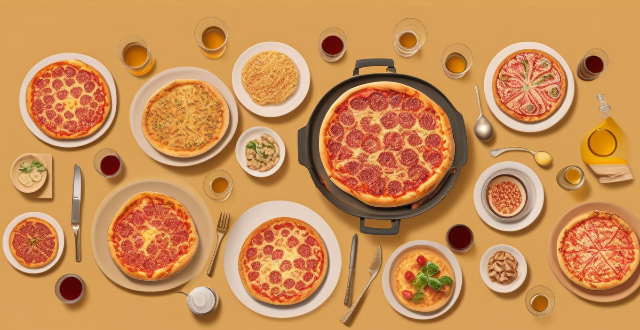
What are the best places to celebrate a milestone event with fine dining in Chicago ?
Chicago offers diverse fine dining options for celebrating milestone events, from innovative modernist cuisine at Alinea to traditional deep-dish pizza at Giordano's. Other notable places include Boka for a contemporary New American menu and The Publican for farm-to-table dishes. For French cuisine, Tru provides an elegant setting, while RPM Italian offers classic Italian in a sleek environment. Oriole and Smyth + The Loyalist offer unique experiences focusing on seasonal ingredients and boutique beef, respectively. These top spots ensure memorable celebrations for any special occasion.

What are some traditional French desserts served during the Christmas holiday season ?
The Christmas holiday season in France is a time for indulgence, and what better way to indulge than with delicious desserts? Here are some traditional French desserts that are often served during the festive season: 1. Bûche de Noël (Yule Log) - A classic French Christmas dessert, this rolled sponge cake is filled with creamy chocolate buttercream and decorated to resemble a log. 2. Tarte de Pommes Caramélisées (Caramelized Apple Tart) - Thinly sliced apples are caramelized and arranged in a pastry shell, creating a smooth and rich custard filling. 3. Palets Breton (Breton Butter Biscuits) - Light and crispy butter biscuits from the Brittany region of France, often served alongside coffee or tea. 4. Macarons - Although not exclusively a Christmas dessert, macarons are a staple in French patisseries all year round. Festive flavors like gingerbread, peppermint, and chestnut make them perfect for the holiday season. 5. Buche de Châtaignes (Chestnut Log) - Similar to the Bûche de Noël, this chestnut-flavored sponge cake is rolled up with chestnut cream and decorated with marzipan to resemble a bark. 6. Oeillet Parfait (Parfait Pudding) - A light and airy pudding made with whipped cream and flavored with vanilla or other extracts, often served in individual glasses and topped with fresh fruit or berries. These traditional French desserts add a touch of elegance and sophistication to any Christmas celebration, satisfying every sweet tooth!

How has Indian cuisine evolved over time ?
The evolution of Indian cuisine is a result of various factors such as geography, climate, history, culture, and trade. India's diverse geography and climate have led to unique culinary traditions in each region, with coastal areas known for seafood dishes and northern plains famous for dairy products and bread. Historical influences like the Mughal era and British colonial period have also shaped Indian cuisine, introducing fusion dishes and bakeries. Trade routes and globalization have integrated foreign flavors into Indian dishes, while regional variations highlight the country's culinary diversity. Modern innovations include fusion dishes and healthier versions of traditional recipes. Overall, Indian cuisine reflects the nation's rich cultural diversity and adaptability to changing trends.

How does Chinese cuisine differ from other Asian cuisines ?
Chinese cuisine is one of the most diverse and influential cuisines in the world, with a history that spans thousands of years. While there are many similarities between Chinese cuisine and other Asian cuisines, there are also several key differences that set it apart. These differences include the use of ingredients, cooking techniques, flavor profiles, and regional variations within each cuisine. Chinese cuisine often uses a wider variety of ingredients than other Asian cuisines, including both meat and vegetables. Additionally, Chinese cuisine often incorporates more spices and herbs into its dishes than other Asian cuisines. Another difference is the cooking techniques used. Chinese cuisine often involves stir-frying or steaming foods, while other Asian cuisines may rely more heavily on grilling or baking. Chinese cuisine also tends to use woks for cooking, which allows for high heat and quick cooking times. In terms of flavor profiles, Chinese cuisine has a distinct flavor profile that sets it apart from other Asian cuisines. Chinese cuisine often features bold flavors such as garlic, ginger, soy sauce, and chili peppers. In contrast, Japanese cuisine may have a lighter, more delicate flavor profile that emphasizes umami (savory) flavors. Thai cuisine, on the other hand, may be spicier and more aromatic than Chinese cuisine. Finally, another difference between Chinese cuisine and other Asian cuisines is the regional variations within each cuisine. China has a vast geographic area with many different regions, each with its own unique culinary traditions. Similarly, Japanese cuisine can vary greatly depending on whether it comes from the northern or southern regions of Japan.
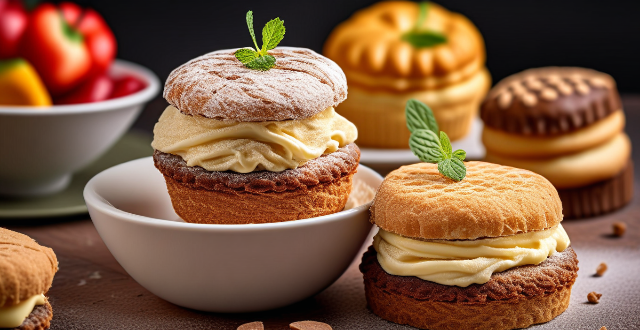
How do French desserts differ from American or British desserts ?
French desserts are known for their high-quality ingredients, precise techniques, and elegant presentation. Popular options include crème brûlée, macarons, and tarte tatin. In contrast, American and British desserts often use simpler ingredients and techniques, with a focus on convenience and taste over appearance. Popular choices include pies, brownies, and cheesecakes.

Where can I find a fine dining experience in Tokyo, Japan ?
Tokyo is famous for its diverse culinary scene, offering a wide range of fine dining experiences that cater to various tastes and preferences. Whether you're in the mood for traditional Japanese cuisine or international fare, there are plenty of options to choose from. Here are some of the top places to find a fine dining experience in Tokyo: ## Traditional Japanese Cuisine ### Kohju - **Location**: Ginza district - **Cuisine**: Kaiseki (traditional multi-course meal) - **Highlights**: Elegant atmosphere, seasonal ingredients, skilled chefs - **Price Range**: High-end ### Ishikawa - **Location**: Shibuya district - **Cuisine**: Sushi (raw fish served with vinegared rice) - **Highlights**: Fresh seafood, expert sushi craftsmanship, intimate setting - **Price Range**: Moderate to high-end ## International Cuisine ### Quintessence - **Location**: Shiodome district - **Cuisine**: French - **Highlights**: Innovative dishes, impeccable service, stunning views of Tokyo Bay - **Price Range**: High-end ### Narisawa - **Location**: Minami Aoyama district - **Cuisine**: Modernist Japanese with international influences - **Highlights**: Creative presentations, locally sourced ingredients, artistic plating - **Price Range**: High-end ## Vegetarian/Vegan Options ### Yohji - **Location**: Harajuku district - **Cuisine**: Vegan Japanese fusion - **Highlights**: Flavorful plant-based dishes, unique flavor combinations, cozy atmosphere - **Price Range**: Moderate ### Sougo - **Location**: Roppongi district - **Cuisine**: Vegan Italian - **Highlights**: Hearty pastas, authentic Italian flavors, friendly staff - **Price Range**: Moderate to high-end ## Budget-Friendly Options ### Ichiran Ramen - **Location**: Multiple locations throughout Tokyo - **Cuisine**: Ramen (noodle soup) - **Highlights**: Customizable broth and toppings, fast service, affordable prices - **Price Range**: Affordable ### Tenya - **Location**: Multiple locations throughout Tokyo - **Cuisine**: Tendon (tempura over rice) - **Highlights**: Crispy tempura, generous portions, quick meals on the go - **Price Range**: Affordable No matter your budget or dietary preferences, Tokyo offers a diverse array of fine dining experiences that will leave you satisfied and eager to return for more.

In what ways does cultural fusion influence food and cuisine around the globe ?
Cultural fusion significantly impacts global cuisine by introducing diverse ingredients, techniques, and fusion cuisines. It encourages culinary innovation and creativity while also promoting the globalization of food cultures. Additionally, cultural fusion affects eating habits and dietary restrictions worldwide.

Can you suggest any upscale restaurants with stunning views in Sydney, Australia ?
Sydney, the cosmopolitan capital of New South Wales, boasts numerous upscale restaurants that offer breathtaking views. Some suggestions include Quay, situated overlooking the iconic Sydney Harbour Bridge and Opera House, serving modern Australian cuisine in a formal and luxurious atmosphere; Aria, located in the stylish Barangaroo neighborhood, offering innovative Australian cuisine with sweeping views of the harbor bridge and city skyline; The Langham, situated on the top floor of the historic Langham Hotel, providing panoramic views of the city and Botanical Gardens while serving French-inspired fine dining; Tetsuya's, set in a converted warehouse in Woolloomooloo, offering Japanese-Australian fusion cuisine overlooking the beautiful Finger Wharf; and Sepia, located on Level 3 of the Sydney Tower, providing spectacular views of the city and harbour while serving modern Australian cuisine with a focus on wood-fired cooking. These establishments not only offer exquisite cuisine but also provide stunning views of Sydney's iconic landmarks and picturesque skyline, making them perfect for celebrating special occasions or enjoying a memorable dining experience.

What are the most popular pasta shapes used in Italian cuisine ?
The article discusses the most popular pasta shapes in Italian cuisine, highlighting their unique characteristics and ideal pairings. The list includes iconic shapes like spaghetti and linguine, as well as more distinctive forms like fusilli and orecchiette. The popularity of each shape often depends on the region and local traditions, with some shapes being better suited for light sauces and others for heartier dishes. Overall, the article emphasizes the diversity and versatility of pasta in Italian cuisine.
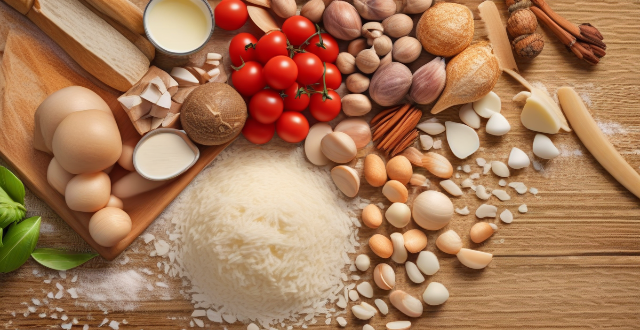
What kind of ingredients are commonly used in Japanese cuisine ?
Japanese cuisine is known for its unique flavors, fresh ingredients, and beautiful presentation. The most commonly used ingredients in Japanese cooking include white rice, brown rice, sweet rice, tuna, salmon, squid, shellfish, chicken, beef, pork, cabbage, eggplant, green onions, mushrooms, soy sauce, miso, udon noodles, soba noodles, ramen noodles, rice vinegar, sesame oil, nori, wasabi, and pickled ginger. These ingredients combine to create the diverse and delicious flavors that make Japanese cuisine so beloved around the world.

How do you describe the taste of authentic Mexican cuisine ?
Mexican cuisine is a vibrant and complex blend of flavors that can be both bold and subtle. Here are some key characteristics that describe the taste of authentic Mexican food: ### Spicy Heat Chili peppers and spices like cumin, oregano, and cinnamon add depth of flavor to many dishes. ### Acidity and Tanginess Lime juice and tomatoes provide refreshing acidity and tanginess, while also contributing sweetness. ### Earthy and Nutty Flavors Beans, corn, and nuts offer earthy undertones and richness to Mexican cooking. ### Sweetness and Fruitiness Fruits such as pineapple and mango, as well as vegetables like sweet potatoes, bring a touch of sweetness to savory dishes. ### Umami Richness Cheese and slow-cooked meats contribute deep, savory flavors to Mexican cuisine. ### Herbaceous Notes Cilantro and epazote provide distinctive, fresh flavors that are essential in traditional cooking. ### Texture Variety Crunchy vegetables and creamy avocado-based sauces offer a range of textures that balance spicier elements. ### Bold and Aromatic Garnishes Onions and cilantro are often used as garnishes, adding sharpness and freshness to dishes. Overall, authentic Mexican cuisine is a harmonious combination of spicy, tangy, sweet, umami, herbaceous, and textural elements that create a complex and satisfying gustatory experience.

What are the best ways to explore the diverse cuisine of South America ?
South America is a continent rich in cultural diversity, and this diversity is reflected in its cuisine. Here are some of the best ways to explore the diverse cuisine of South America: 1. Visit local markets and street food stalls for authentic dishes. 2. Take cooking classes to learn how to make traditional dishes. 3. Dine at local restaurants for regional specialties. 4. Attend food festivals for a variety of South American dishes. 5. Travel off the beaten path for unique culinary traditions. 6. Try different cuisines within South America for a well-rounded understanding of the continent's culinary diversity.

Can you recommend any Michelin-starred restaurants in Paris ?
Paris is home to several prestigious Michelin-starred restaurants. Among the recommendations are Le Grand Restaurant, L'Ambroisie, Alain Ducasse au Plaza Athénée, Guy Savoy, Le Pré Catelan, and Arpège, each offering unique dining experiences with dishes that showcase seasonal ingredients and impeccable techniques. Reservations are highly recommended due to high demand.

Are there any exclusive dining spots in Los Angeles that offer an exceptional culinary experience ?
Los Angeles boasts a variety of exclusive dining spots offering unique settings, innovative menus, and world-class service. From seafood at Providence to modernist cuisine at Vespertine, these restaurants cater to those seeking an exceptional culinary experience. Reservations are often necessary due to popularity and limited availability.

What is the history behind the French dessert, éclair ?
The éclair is a classic French dessert with a rich history dating back to the early 19th century. Originally known as "petites patisseries" or "small pastries," these early versions were made with a choux pastry shell filled with a sweet cream or custard filling. Over time, the recipe evolved and became more sophisticated, leading to the modern-day éclair with its iconic chocolate icing on top. As the popularity of the éclair grew, bakers began experimenting with different flavors and fillings, resulting in countless variations such as chocolate, coffee, pistachio, and strawberry éclairs. Today, the éclair remains a beloved dessert worldwide, enjoyed by people of all ages and cultures. Its enduring appeal and adaptability make it a true culinary masterpiece.

What are some of the most culturally rich travel destinations ?
Traveling is not only about seeing new places, but also about experiencing new cultures. Here are some of the most culturally rich travel destinations in the world: Paris is known as the "City of Love" and is one of the most romantic cities in the world. It's also a cultural hub with numerous museums, art galleries, and historical landmarks. Rome is an open-air museum with its ancient ruins, Renaissance architecture, and Baroque fountains. It's also a food lover's paradise with its delicious Italian cuisine. Beijing is a city where ancient history meets modernity. It's home to numerous historical sites such as the Great Wall and the Forbidden City. The city is also known for its Peking duck and traditional Chinese medicine. New Orleans is a melting pot of cultures with its unique blend of African, French, Spanish, and American influences. It's famous for its jazz music, Mardi Gras celebrations, and Creole cuisine.

How do French pastry chefs achieve such delicate textures in their desserts ?
French pastry chefs are renowned for their ability to create desserts with exquisite textures that melt in your mouth. Achieving such delicate results involves a combination of precise techniques, high-quality ingredients, and meticulous attention to detail. Here's a breakdown of the key factors: 1. Mastery of Basic Techniques 2. Use of High-Quality Ingredients 3. Precision Cooking Methods 4. Creative Combinations 5. Attention to Detail

Can you suggest easy French dessert recipes for beginners ?
Easy French Dessert Recipes for Beginners French desserts are known for their elegance and flavor, but they can also be easy to make. Here are some simple French dessert recipes that even beginners can try: Tarte Tatin: - Ingredients: apples, sugar, butter, puff pastry - Steps: preheat oven, peel and core apples, melt butter and sprinkle sugar in skillet, cook apples until tender, caramelize syrup, roll out puff pastry, place over apples, bake until golden brown, cool and invert onto serving plate. Chocolate Mousse: - Ingredients: dark chocolate, eggs, sugar, heavy cream - Steps: melt chocolate, separate egg yolks and whites, beat yolks with sugar until pale and thick, beat whites until soft peaks form, fold melted chocolate into yolk mixture, fold in whites, whip cream until stiff peaks form, gently fold whipped cream into chocolate mixture, spoon into serving dishes and chill before serving. Crème Brûlée: - Ingredients: heavy cream, sugar (plus extra for topping), egg yolks, vanilla extract - Steps: preheat oven, heat cream and sugar until simmering, whisk egg yolks and sugar until combined, slowly pour hot cream into egg mixture while whisking constantly to prevent curdling, stir in vanilla extract, strain mixture through sieve into measuring cup or pitcher, pour into ramekins placed in baking dish with hot water halfway up sides of ramekins, bake until set but slightly jiggly in center, cool to room temperature then chill for at least 2 hours before serving; just before serving sprinkle each crème brûlée with thin layer of sugar and use kitchen torch to caramelize sugar until golden brown.
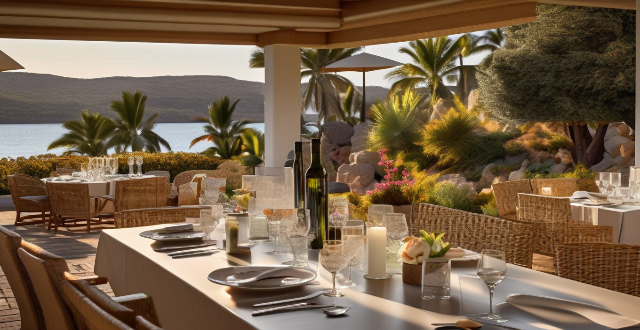
Can you suggest luxury resorts that offer exceptional dining experiences ?
Luxury resorts offer exceptional dining experiences, from oceanfront restaurants to farm-to-table options. Here are some top picks for luxury resorts with exceptional dining: Four Seasons Resort Bali at Jimbaran Bay, Amangiri in Utah, Banyan Tree Mayakoba and Rosewood Mayakoba in Mexico, Six Senses Zighy Bay in Oman, Emirates One&Only Wolgan Valley in Australia, Mandarin Oriental Bodrum in Turkey, Cheval Blanc Randheli in the Maldives, The Brando in French Polynesia, and Capella Ubud in Bali.
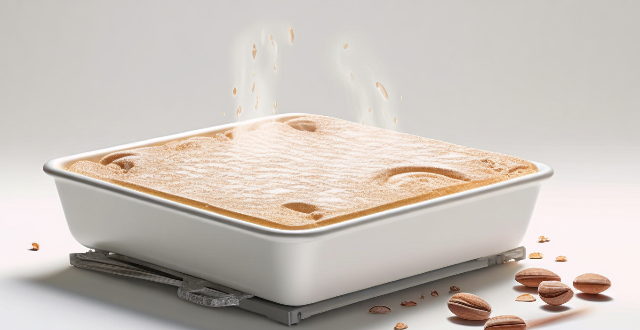
How do I make a classic French crème brûlée ?
Crème brûlée is a classic French dessert known for its rich, creamy custard and crackling caramelized sugar topping. Here are the steps to make it: Preheat the oven to 300°F (150°C), heat cream mixture with sugar and vanilla bean, whisk egg yolks with sugar, temper eggs with warm cream mixture, pour into ramekins, bake in a water bath until set but slightly jiggly, chill for at least 2 hours or overnight, caramelize sugar topping with a kitchen torch or broiler, and drizzle with caramel sauce (optional). Use high-quality ingredients for the best flavor, be patient when caramelizing sugar, and serve immediately after caramelizing for the best texture and taste.
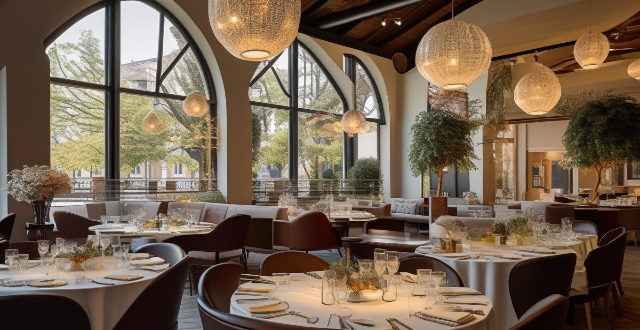
What are some top-rated luxury restaurants in London ?
London is home to several top-rated luxury restaurants, each offering a unique and exceptional dining experience. The Ledbury, located in Notting Hill, is a Michelin-starred restaurant known for its innovative Modern British dishes. The Clove Club, situated in Shoreditch, offers creative and visually stunning British cuisine. Core by Clare Smyth, also in Notting Hill, provides an unforgettable fine dining experience with three Michelin stars. The Five Fields in Chelsea focuses on local and seasonal ingredients, while Alain Ducasse at The Dorchester in Mayfair offers a luxurious French dining experience from one of the world's top chefs. These restaurants are must-visit destinations for anyone looking to indulge in London's culinary scene.

How can I find authentic local cuisine when traveling ?
The text provides a comprehensive guide on how to find authentic local cuisine when traveling. It suggests researching before the trip, asking locals, exploring markets, dining with locals, trying regional specialties, taking cooking classes, using technology, and being adventurous. The guide emphasizes the importance of stepping out of one's comfort zone to enjoy new flavors and dishes.
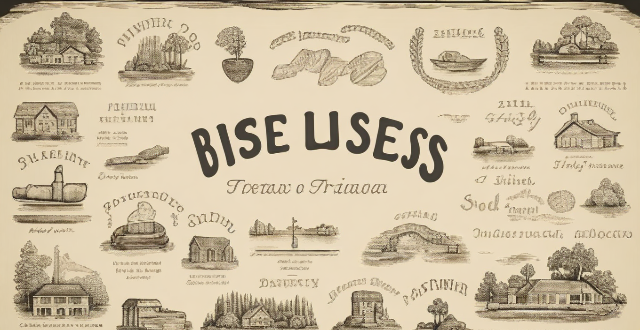
What are the best travel destinations for foodies ?
The text discusses the best travel destinations for food lovers, including Italy, France, Japan, Thailand, and India. The author provides a brief overview of each country's cuisine, highlighting some popular dishes that are unique to each destination.

How does street food influence local cuisine and culture ?
Street food is a crucial element of local cuisine and culture, offering accessibility, diversity, economic benefits, cultural preservation, social interaction, and global influence. It supports local agriculture, encourages innovation, fosters community bonding, and attracts tourism, thereby shaping the culinary scene and cultural identity of a city.